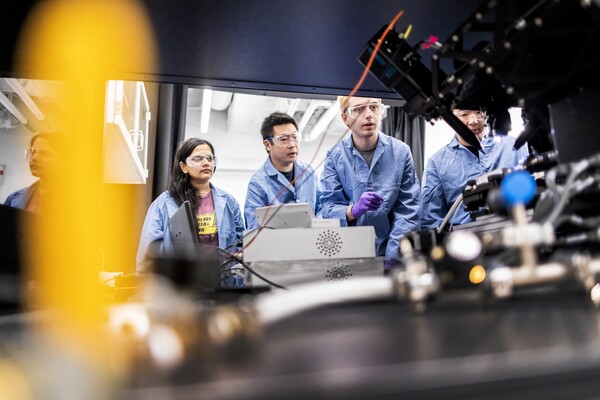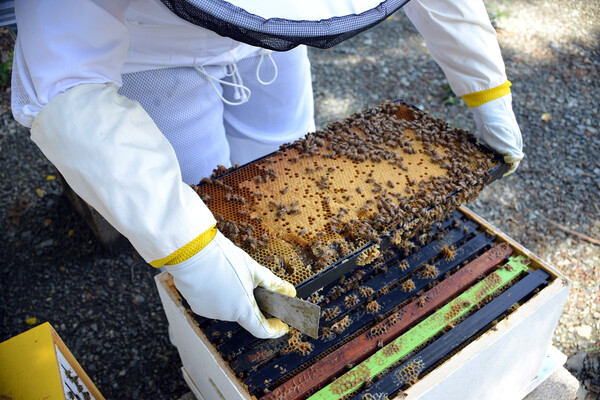
nocred
How can an organization with no revenues demonstrate its value to the community in terms of dollars and cents?
That was the challenge facing the Free Library of Philadelphia before it tapped Fels Research and Consulting to investigate.
“We wanted to show the impact of the work we do,” says Sandra A. Horrocks, vice president of external affairs for the Free Library of Philadelphia Foundation. “They specifically looked at work we do with small businesses and job seekers. They found that 8,600 small business owners either started or improved their business using library resources. It was terrific.”
Housed in Penn’s Fels Institute of Government, the research and consulting practice consists of graduate students—seven this semester—who operate as a professional firm.
“It’s run like a consulting business,” says Director Lauren Hirshon. “There’s a mix of ways that we do business development. We’ve set up partnerships with potential clients. In other cases we have responded to [requests for proposals] or sought grant funding. We also have a cadre of senior advisors who are seasoned professionals who work on various projects with us.”
The Fels Institute was set up more than 70 years ago by the school’s founding donor, Samuel Fels. Over the course of its history, it has completed more than 1,400 projects.
“It was started during a period when there was a lot of mismanagement and corruption taking place in government,” Hirshon says. “[Fels] wanted to train people to make sure they were better prepared to be effective and efficient and honest leaders. In addition to setting up the master’s program, they also decided that it made sense to help professionals in the field by offering research and consulting services. There was a period when the practice went on hiatus. It was resurrected about 10 years ago with a new model.”
In its current form, Research and Consulting is staffed by graduate students who must apply, submit a writing sample and interview for the position. Those who are hired are paid hourly, and work about 20 hours per week during the school year and up to 40 hours a week in the summer.
Fees generated from clients are used to cover costs, and surpluses go to financial aid for graduate students. The program has made more than $60,000 in stipends, according to Hirshon.
“We think this is a really terrific opportunity for students to easily move back and forth from the classroom to the world outside,” says David Thornburgh, executive director of the Fels Institute of Government. “It really hammers home the lessons and observations that they’re learning about life in the public sphere.”
Lauren Hansen-Flaschen is a second-year graduate student working toward her master’s of public administration. As an associate consultant, she’s contributing to the second edition of the promising practices report, “Making the Most of Social Media, 7 Lessons from Successful Cities.”
“There’s a real need to know how local governments are using social media,” she says. “This is a guide to show what’s working and what’s not, not from so-called experts, but from people actually doing it.”
Associates interview professionals in the field, conduct surveys, analyze data and pore over hundreds of reports during the course of a project. The consultants’ first social media guide “provided public sector managers with a primer for understanding what social media is and how it can be put to work in municipalities,” and was distributed throughout the country.
“What’s amazing about having the opportunity to work as a student here is you’re doing real-world work,” Hansen-Flaschen says. “You don’t feel like you’re some intern preparing work for other people higher up on the food chain. You’re meeting with the clients, you’re scheduling interviews, you’re coordinating a ton of different elements. You’re doing the research, you’re doing the writing.”
Last summer the group helped develop the curriculum for the 2011 National Association of State Chief Administrators’ Institute on Management and Leadership. It also was selected by the Old York Road Revitalization Group, formed by the Jewish community of the Old York Road Corridor, to help create a development and marketing strategy to increase the vitality of the region.
“It’s nice because it fits with the Fels mission, which is to help organizations, communities, nonprofits and governments work more efficiently and effectively,” Hirshon says. “At the same time it creates a meaningful student experience giving back to the community.”
That’s precisely what happened with the Philadelphia Free Library project. The Fels report found that 10,788 people could not have learned to read without the library, and 14,024 people taught someone else to read using the library. The economic impact of this: $21.8 million. In addition, almost 1,000 individuals found jobs directly because of the library, registering $6 million in economic value. Perhaps most surprising: Houses located within a quarter mile of a library are worth an average of $9,000 more than houses farther away, which produces $18 million in additional property taxes.
“We’ve used [the report] for advocacy,” Horrocks says. “I think sometimes institutions like the Free Library that have been around for a very long time, are taken for granted. The graduate students went out to many of our branches and did surveys. The customers liked them, our staff liked them. It was very easy, very comfortable. It always felt like we were their No. 1 client.”

nocred

The sun shades on the Vagelos Institute for Energy Science and Technology.
nocred

Image: Kindamorphic via Getty Images

nocred